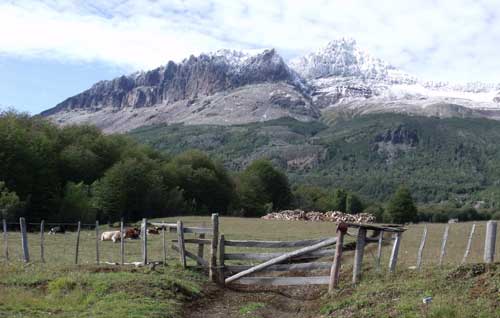The British Presence
in Southern Patagonia
+ + Region of Aysén & Río Baker, Chile + +
Early "British" presence

Part of the Magallanes Territory until 1928, Aysén was the last area of Chilean Patagonia to be developed: the southern half of the province (as far as Coyhaique) falls within the scope of this web site.
Rough terrain and extreme isolation presented severe challenges for the pioneers, whether individual families or corporate investors managing extensive concessions. The areas suitable for sheep-raising are well inland: but there was no overland (north-south) communication with the rest of the country, all access being from the east, via Argentina. Customs tariffs and government pressure encouraged investors to find an outlet for their products on the Pacific coast.
The first public-access road, completed in 1906, ran up the Aysén and Simpson valleys, which link present-day Puerto Aysén and Coyhaique. However, development of the Río Baker route was very difficult work, owing to its inaccessibility, and the presence of hostile natives and bandits. An example of the extreme risks was the death from scurvy of a large group of labourers (brought from Chiloé under contract) when the expected supply vessel failed to arrive, having sunk in Valparaíso harbour during an earthquake.
The early decades were difficult for all: lands which had been rented to the large companies on long-term contracts were increasingly occupied by individual settlers and their families: tensions arising from this sometimes turned into violence. Over the years, the large concessions were progressively reduced, being finally swept away in the agricultural reforms of 1964.